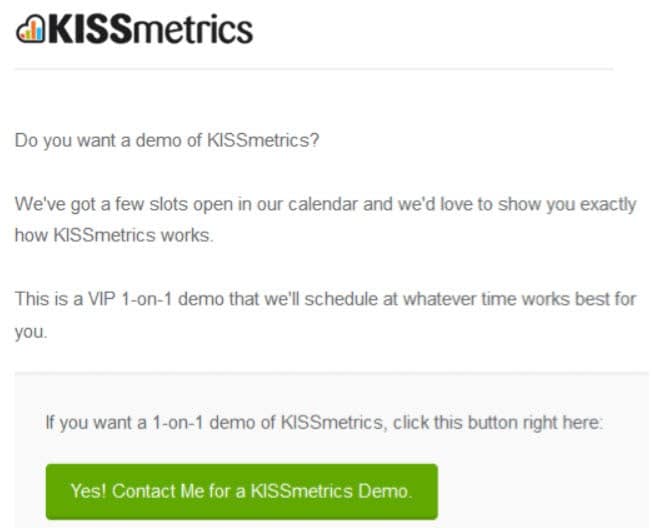In the B2B world, it takes time and effort for salespeople to grow a company’s customer base. Fortunately, you can tip the scales in your company’s favor by perfecting the art of following up with leads. Here are helpful tips and strategies to include in your company’s sales follow-up strategy.
Why are sales follow-up strategies so important?
As most salespeople can tell you, it’s rare to close a client after the first meeting. Clients often need time to digest information. Sometimes, they need to speak with managers and other colleagues before making a decision. It’s also likely that these clients are also being contacted by your competitors.
With so many things going on, how can your company’s sales process stand out? By having an effective sales follow-up strategy. This type of strategy shows your company is willing to go the extra mile to win people over. Following up also gives your business the chance to receive feedback from leads about what’s winning them over or turning them away.

4 essential ways to follow up with sales leads
Now that you know why following up is so important, it’s time to learn how to put your sales follow-up plan into action. Fortunately, there are several popular and effective ways to follow up with sales leads. We’ve broken down the most effective ways to follow up with clients using the helpful tips below.
1. Email
Considering how much online work people do, it makes sense that email remains one of the most popular sales follow-up methods. One study found that 86% of business professionals chose email as their preferred method of communication. This doesn’t mean you should start sending out emails every hour to all of your leads.
How often should you send follow up sales emails?
- Week 1: As a rule of thumb, it’s best to send out your sales follow-up emails two or three days after you’ve last spoken with or reached out to a client.
- Weeks 2–4: If you’re not getting responses after the first week, consider reducing your lead emails to once per week for a while.
- Weeks 4–8: After a month of no responses, try to follow up with those on your email lead list once every two weeks.
- Weeks 8–onward: If you’re still not getting a response after a few months, cut back the emails to once per month.
Tips for creating follow-up emails
Now that you know when to send emails, you’ll want to learn how to make them stand out. Here are tips to help you create the perfect follow-up email.
1. Send emails packed with value
It’s understandable to wonder what to include to create engagement with your follow-up emails. To solve this problem, use follow-up sales emails as a way to share your company’s content. For example, including videos in your emails can increase click-through rates by up to 96%.
Besides embedding videos, there are many ways to provide value-packed emails for your leads. Before sending your next follow-up email, take a moment to include one of the following:
- A recent news story
- A study they might find helpful
- Links to useful videos
- Relevant updates about your company’s products and services
- Information about new promotions or trial offers
2. Stick to the point
You likely have lots of things you want to tell leads to win them over. With that said, it’s much more effective to keep your follow-up emails relatively to the point. Lengthy emails are going to come across as just that, lengthy. No busy employee wants to read a long-winded email. By keeping things short and sweet, you’re far more likely to get a response.
3. Have the next step in mind
After providing valuable information, it’s also important to keep the next steps of your lead’s sales journey in mind. It’s understandable to want to avoid having this come across as being “pushy.” For help with how to pull this off, it’s wise to take a page out of KISSmetrics’ playbook.
In its follow-up emails, KISSmetrics urges leads to try a 1-on-1 demo. By calling leads “potential VIPs” and informing them there are only a “few slots open,” they’re selling the client on the next steps of its sales follow-up process with exclusivity and urgency.
2. Social media
It’s also important to include social media as part of your company’s sales follow-up strategy. Research shows that 75% of senior and influential B2B buyers use social media to help them with purchasing decisions. To reach these individuals, it’s a good idea to utilize the power of social media.
Tips for following up with sales leads on social media
Following up with leads on social media isn’t for everyone. But, if social media is a part of your sales follow-up process, learning a few tips can make closing clients here easier. Here are a few proven tips to help you succeed at following up on social media.
1. Create accounts on multiple platforms
As you likely know, there are many popular social media platforms. One study found that 56% of C-Level and VP Executives use LinkedIn to make B2B purchasing decisions. However, it’s not wise to limit your company to only one social media platform. By creating a multi-platform social media marketing strategy, your company will likely start showing up almost anywhere your social media leads are.
2. Have lots of content for them to enjoy
If you want to have lots of B2B followers, provide lots of social media content. This doesn’t mean you have to create original posts each day. Link to older website posts, recent studies you’ve seen, and anything else your industry’s audience might enjoy. You can further increase interactivity by having followers take part in polls.
3. Create groups on social media
Many companies have their own social media pages. However, not many companies are wise enough to create groups on social media. Fortunately, your company can capitalize on this opening by creating groups themed around your industry. If you spend time and effort creating a decent library of content, you might be surprised to see how many people join your brand’s community.
3. Direct mail
Sometimes, it’s a good idea to take the road less traveled. Since your clients are likely bombarded with emails, social media messages, and phone calls, why not give something else a try? To do this, think about including direct mail into your sales follow-up strategy.
How to follow up by direct mail
Sending direct mail can provide a personal touch. It’s also a method most of your competitors aren’t using – meaning less competition. If the situation isn’t urgent and you’re looking for an effective way to follow up, check out these direct mail follow-up tips.
1. Create something that stands out
When it comes to succeeding at following up, it’s often helpful to do what others aren’t. With that in mind, most companies are sending out standard letters or flyers to their clients. To achieve this goal, follow these tips to make your company’s direct mail stand out.
- Avoid standard letter size
- Choose bold colors
- Place an enticing message on the envelope
Telecommunication company KCOM pulled all three of these aspects off this with its “Are You Listening?” direct mail campaign. This campaign saw KCOM send out large boxes to its B2B sales leads. By standing out from the crowd, this campaign goes on to achieve an astonishing 25% conversion rate.
2. Include something tangible
Another great way to generate more sales is by giving leads something they can hold on to besides a piece of paper. You don’t have to take out a business loan to do this. Consider using branded items you have a surplus of or something else that’s cost-effective.
Another advantage of including physical items is that it skyrockets the chance that leads open the mail you send. It’s human nature to feel or hear something other than a letter inside an envelope and want to know what’s inside.
Skoda, an automobile manufacturing company, recently pulled this strategy off by attaching actual money inside of their direct mail. Imagine your company tries this idea and includes a penny in its next direct mail campaign. If you had 1,000 leads on your mailing list, this idea would only cost an additional $10 to implement.
3. Make it personal
More often than not, sales are the results of personal connections happening between two parties. After all, most people would rather purchase products and services from those they get along with. Fortunately, you can create these same types of personal connections with your company’s direct mail letters.
To make your direct mailers more personal, include information you’ve gathered from prospecting. This includes names/titles, company news, and anything else that adds a nice, personal touch.
4. Phone
Calling leads remains a tried-and-tested follow-up technique. However, many salespeople find it difficult to get results by following up with clients by calling them. Here’s how to start converting sales leads with phone calls.
How often should you call sales leads?
Out of all the follow-up methods, phone calls are going to be the most intrusive. Generally speaking, you’ll be able to gauge how interested a company is after a few calls and voicemails. If a company isn’t interested, it’s probably best to steer clear of making future phone calls for a while.
Follow these tips before making follow-up sales calls
By learning a few tips, you can gain much more success from following up over the phone. Here are several tips for getting more out of your follow-up sales calls.
1. Know when to call
You don’t need to memorize the time zone of each of your leads. Instead, you can use sales software or a CRM program to keep track of your client’s time zones.
Research from Lead Response Management shows that 8–9 am and 4–5 pm are the best contact times for sales leads to become qualified. Unsurprisingly, anytime near when most adults are having lunch remains the worst time to contact leads.
2. Give each call a specific purpose
Don’t be the salesperson that frames following up as a way to touch base. This is one of the most overused phrases in the world of sales. While it’s a good-intentioned way to follow up, it can come across as there being no reason for your call.
There are many ways to give your sales follow-up calls a purpose including:
- Re-emphasizing the benefits of your product or service
- Sharing new sales ideas or insights
- Telling them about relevant industry news or information
- Celebrating a recent development with this client’s company
3. Less is more when it comes to calling sales leads
Calling someone is much more intrusive than sending an email. Sending a few too many emails is mildly annoying, but making too many phone calls to your leads can make them downright angry. By keeping calls to a tasteful minimum, you’re much more likely to find a receptive potential client on the other end of the line.
Conclusion
If you want to continue growing your business, you’ll need a sales follow-up strategy. By following our tips, you’ll become a master of following up with sales leads in no time.
Looking for more on developing your B2B sales strategy? We’ve got you covered.









